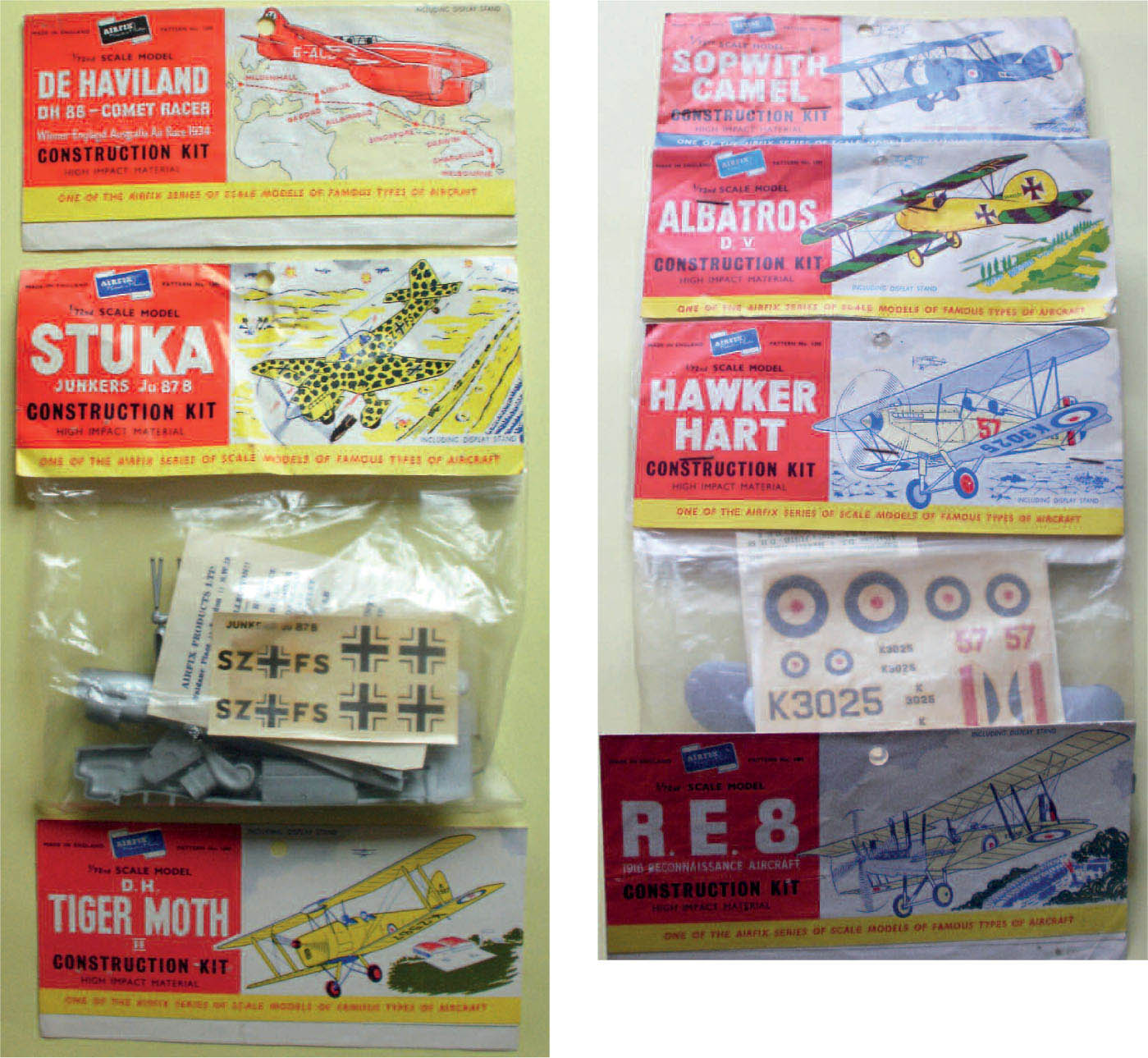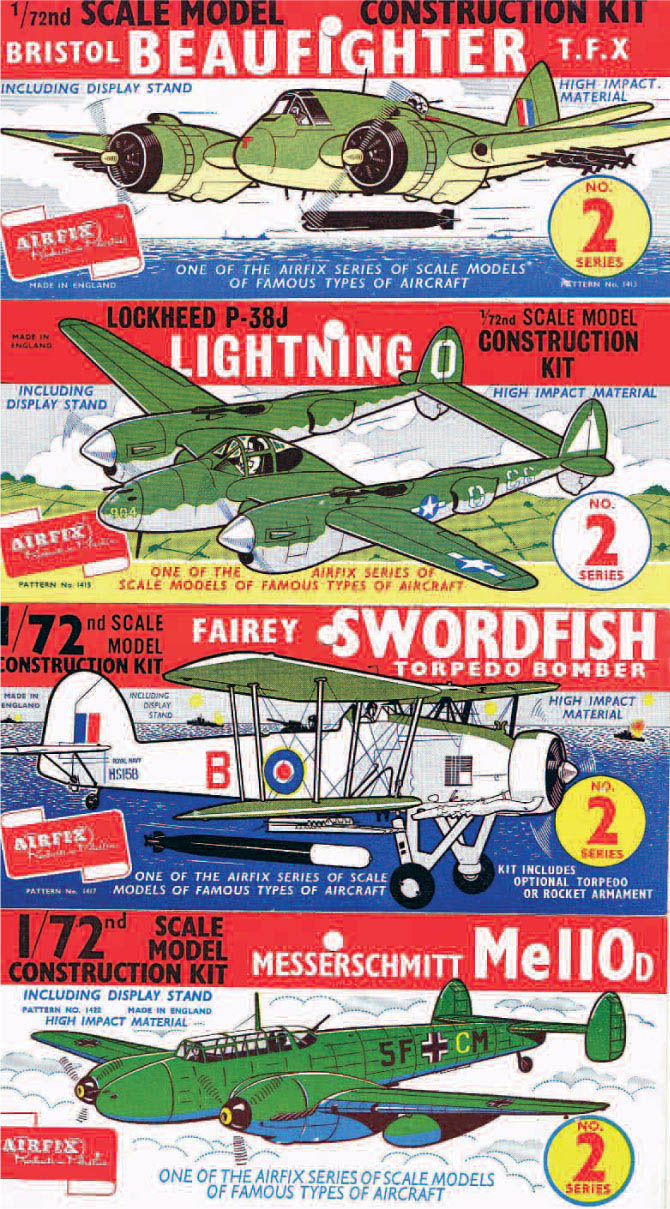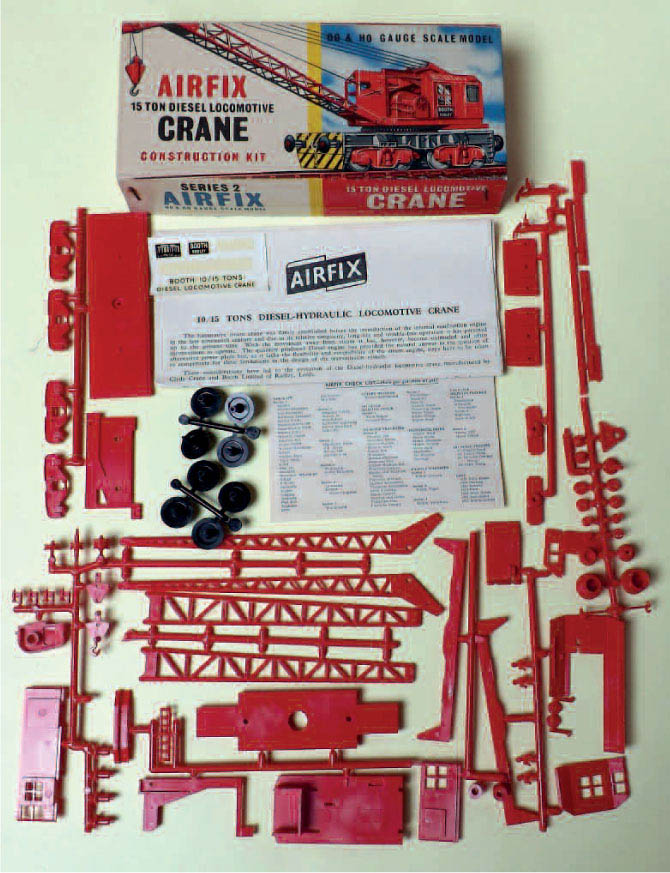

Sixty years ago, in 1955, as Britain was at last emerging from the post-war austerity that had prevailed since 1945, shoppers in branches of F. W. Woolworth & Co were pleased to note the appearance of a plastic construction kit of the most famous fighter of World War II, the Spitfire. It was produced by a small South London company that was perhaps better known for its range of plastic toys and, until recently, combs. The company was Airfix Products, and since the early 1950s they had been producing a small range of construction kits that were sold exclusively through Woolworths.
The early kits were mainly a selection of small sailing ships or vintage cars, but since interest in British war films and the war itself was very high, and the film of the famous Dambuster raids was packing cinemas, the decision by Airfix to manufacture its first aircraft kit, a Spitfire, was inspired. The aircraft range grew more quickly than any other, and soon made Airfix a house-hold name. Within a few years ‘Airfix’ was to become the generic name for all construction kits, and its earlier products, like the combs, had almost been forgotten. It would go on to produce more toys, games, racing sets, trains, building, art and craft sets, but it will always be remembered for its kits. The kits were the only part of Airfix to survive intact the disastrous events of January 1981.
By the late 1970s, and bolstered by its own magazine, Airfix Magazine, which was the highest-selling modelling magazine at that time, it had produced the largest and most diverse range of construction kits in the world. Keen modellers could buy kits of dinosaurs, birds or steam engines as well as ships, figures and, of course, aircraft. In fact many people believed that the name ‘Airfix’ was taken from its range of aircraft construction kits, but that was just a happy coincidence!
The largest range of kits was, and still is, the range of aircraft kits, which cover scales from 1:144 through 1:72 and 1:48 to the giant 1:24 ‘Superkits’ that Airfix pioneered. One of the early selling points of the Airfix range was its adherence to a ‘constant scale’ whereby every kit in a particular range was moulded to the same scale, so that a schoolboy’s Messerschmitt could attack a Lancaster without looking out of place. Kits were also sold in numbered series, from one to twenty, depending upon complexity and size. So, for example, a Sopwith Camel would appear in Series 1, whilst a B-29 Super-fortress was in Series 7, making it an ideal Christmas present for young modellers. Airfix strove to release a large aircraft kit just before Christmas, no doubt with the ‘present’ market in its sights.
Airfix also employed some of the finest artists to illustrate the box tops, believing that it was the picture that sold the kit. Who can forget those stirring Roy Cross paintings, like the Lancaster struggling to land with an engine on fire, or Brian Knight’s Waterloo Highlanders in their bright red uniforms firing at the advancing French infantry? That was what sold the model to the countless numbers of schoolboys, and their fathers, who would regularly visit their local newsagents or nearby branch of ‘Woolies’ to see if the latest kit was out. It was the dream that sold the reality, and to this day the box tops tend to be what many older modellers remember with most affection. Many of the kits have not aged well over fifty or more years, but those stirring paintings still entice the would-be buyer to part with his money, and are in fact works of art in their own right.
Sixty years after the release of the first Spitfire, Airfix is once again releasing new kits at a rate not seen since the 1960s and 1970s. Many of those tired old kits from fifty or more years ago are now being replaced by new tools with an unprecedented level of detail. The history of Airfix has been well covered in the books written by Arthur Ward and in the back issues of Constant Scale, so I shall concentrate on the kits and models Airfix has released since the little Golden Hind over sixty years ago.
Kits were designed to be made; older modellers took their time and often never got round to starting some of the kits in their ‘stashes’, which would prove fortuitous to visitors of eBay today – but young modellers were very impatient. Typically, the latest kit was bought with your pocket money in the morning and assembled by early afternoon, and thanks to the introduction of ‘one-hour’ enamel paints they could be painted up before tea-time. Then you borrowed your mum’s nail scissors, put some water in a saucer and applied the waterslide ‘transfers’ to your latest project. Once dry, or nearly dry, the fun would begin: battles were fought and war stories re-enacted, and when you tired of it (in those pre-Health and Safety days) you could buy some penny ‘bangers’ or load your air rifle and blow your model to bits. Most satisfying!

Early aircraft kits from the 1950s.

Late 1950s Series 2 headers.

Diesel Crane kit from 1961.
I started making Airfix kits when I was nine or ten, and still have most of the models I made. As you will see from the pictures herein, many bear the dust and dirt marks of thirty-five years or more in storage, and reflect my own modest modelling skills. I could never reach the standard of the super modellers one sees in magazines and at model shows, but I enjoyed making them and doing my best, and that is what it is all about. I learned a lot about aircraft, tanks and ships from making those models, and they encouraged me to find out more.
In those early days we spent hours with one of our dad’s old razor blades clutched between our fingers, cleaning up the plastic on our kits and stretching plastic ‘sprue’ over a candle, inhaling the intoxicating aroma of the plastic glue! I still have the scars from my early encounters with them.
We may have shot our models to pieces or blown them up in the back garden shortly after we’d made them, but we could always lie in bed with the latest Airfix kit catalogue and drool over all those wonderful paintings of the kits we had just destroyed. We could also dream that one day we might be able to complete a kit so that it looked like the ones on the pages. This is the story of those dreams.
Jeremy Brook